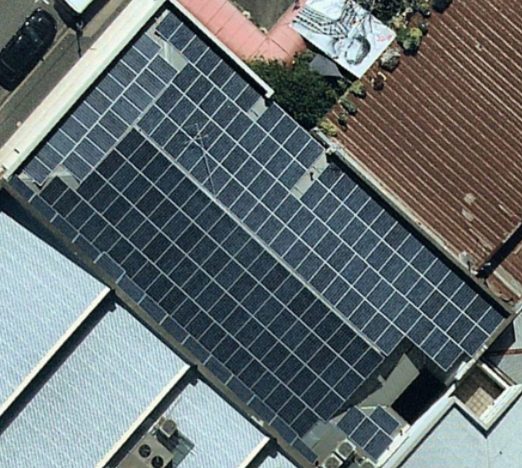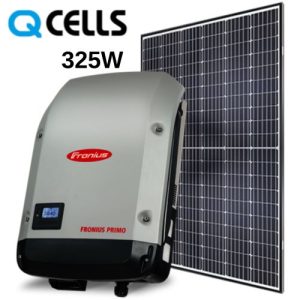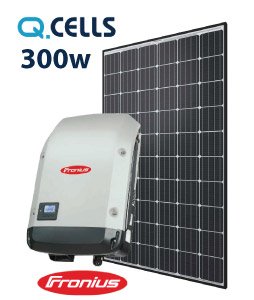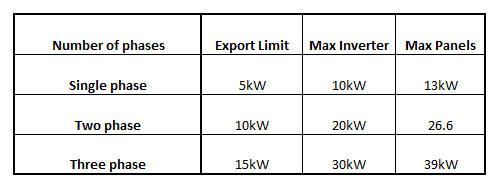What size solar system do I need?
It’s one of the first questions you should ask when looking for solar: What size solar system should I get? This post will first dispel the “Goldilocks solar” myth of accurately sizing a solar system to match your daytime power consumption. I’ll then explain why for several years, a 5kW inverter with 6.6kW of panels had been our biggest seller. It sounds like one size fits all – right?
Next, I’ll explain how times are changing, and why in 2018, it is not uncommon that the best size solar system is just to cover the usable roof with solar panels.
Goldilocks solar
People often approach purchasing solar with Goldilocks wisdom. They know they don’t want a system that’s too small, and they don’t want to waste money on a system that’s too big.
I just want a solar system big enough to cover my daytime usage.
This seems reasonable. Why would you waste money on an oversized system that you won’t ever use?
The problem with attempting to size a system with the aim of covering daytime usage only – is that there are so many seasonal solar production and household consumption variables. If your system is too small in one situation, it will be too big in another situation. But let’s say you monitor your usage and you somehow find that a 3kW size solar system will closely match your usage patterns from sunrise to sunset, and from mid-winter to Chrismas day. Not too big and not too small. So you get onto Google and type “3kW Goldilocks Solar System”. The first thing that comes up is this blog “what size solar system do I need?” (because I just coined the term.)
Our pricing page shows an indicative price:
(Prices current January 2019)
 3kW Goldilocks Solar
3kW Goldilocks Solar
Fronius Primo 3kW inverter (Austrian Made)
9 x 325W QCells (Korean made)
$5400
Yes, that’s expensive! At that price, the Goldilocks solar system is starting to look like a fairy tale. You shouldn’t be surprised to learn, for that price, we hardly ever sell a 3kW system. But if you want a quality inverter, quality panels, and quality rail, isolators, fasteners, cables, sealants etc – and all installed by quality tradesmen – that’s just how much it costs.
But there is a better option.
What is the most common size solar system?
Over the last few years, our most popular solar system as listed on our pricing page has been this:
(Prices current May 2018)
6.6kW Solar
Fronius Primo 5kW inverter (Austrian Made)
22 x 300W QCells (Korean made)
$7400
While a 3kW size solar system is going to set you back $5400, a 6.6kW system will cost you $7400.
That’s only $2000 for the additional 3.6kW. You’ll generate 120% of the power for just 38% more cost.
Why is a 3kW system so expensive?
Don’t get me wrong, we could sell you an entry-level Solar system for $4200. Or you could pick up some nasty roof bling, AKA “solar land-fill” with a drive-away warranty for under $3000.
I’m comparing a good quality 3kW system to a good quality 6.6kW system. But why isn’t the 3kW size solar system around half the price of a 6.6kW system?
- A 3kW Fronius inverter only costs about $200 less than a 5kW, because it’s essentially the same as a 5kW inverter with different programming and a different compliance stamp. It’s about economies of scale. Most inverter manufacturers do the same.
- Every panel we install attracts a “rebate” (technically called an STC) so the more panels you put on, the bigger the “rebate” you get. At today’s rate, a 3kW size solar system will attract a $1910 “rebate” where a 6kW system will attract a $4250 “rebate”. (This is a point of sale discount so it is already factored into the system prices above.)
- Installing a 3kW size solar system may take 6 hours for a team, installing a 6.6kW system may only take 8 hours. (All of the switchboard work and the cable run between the inverter and the panels has to be done either way).
So the only real cost of installing the larger system is 11 extra panels (that are largely paid for by the STC “rebate”), extra rail to mount panels on, a few hundred bucks for a 5kW inverter, and a couple of extra hours labour for the blokes on the roof.
But do I need a 6.6kw solar system?
My home will not use the power generated from a 6.6kW system. So why wouldn’t I just keep the extra 2 grand in my pocket.
When the feed-in tariff was as low as 6 cents, there wasn’t much incentive to feed power back to the grid. But with feed-in tariffs now between 10 and 14 cents (and likely to rise as power prices rise) feeding power back to the grid makes more sense. Especially when you only spend an additional $2000 for more than twice the size solar system. The figures look something like this:
- The additional 3.3kW of solar produces about 5000kWh a year
- Assume you send all of that back to the grid. (However on rainy days, early mornings and winter months you will use that extra generation.)
- 5000kWh @ 14 cent (feed-in tariff) = $700 a year
- You will see a return on your $2000 in less than 3 years
You may be wondering why the magic number is 6.6kW of solar. The reason behind this is that Energex previously only allowed a 5kW inverter on most homes, and solar regulations (through the CEC guidelines) meant that we could only install 33 percent more panels than the inverter capacity.
5kw inverter x 1.33 oversize = 6.6kW of panels
So 6.6kW solar systems were the biggest size solar system you could legally install, and it gave you best bang for buck. No wonder for several years it seemed like a one size fits all approach. But times are changing.
The new normal
Over the last year, there has been a trend in the residential solar industry to install larger systems. While 6.6kW systems remain a large proportion of our work, we regularly install 8kW, 10kW and even 15kW systems on homes. Why are systems getting bigger?
- As inverter technology is getting better at reacting to grid issues, Energex and other retailers are allowing larger size systems.
- Customers are future-proofing their solar for batteries and electric vehicles.
- A larger system will do a better job at covering consumption during winter and on rainy days.
- Increasing feed-in tariffs are making feeding power back into the grid a reasonable investment.
- Installing extra panels often doesn’t cost much more.
So let’s just go crazy eh?
What is the biggest solar I can install?
In South East Qld, we are limited to:
The number of phases is referring to how many lines are coming into your house. The easiest way to identify this is by the size of your main switch or by looking at your electricity meter.
- Most homes are single phase
- Only occasionally an old larger home will be 2 phase.
- Large homes with ducted aircon and commercial business premises are often 3 phase.
The “Export limit” column takes some explaining, Although we can put a 10kW inverter on a single phase home, we can only ever send back 5kW of power to the grid at any given time. This needs to be carefully considered in the design process with appropriate load shifting. If you want to install a Tesla battery in the future, it has a 5kW inverter for a battery charger, so you then should only install a 5kW solar inverter.
The “max panels” column is as a result of Clean Energy Council guidelines. We can only oversize the panels on the inverter by 33 percent.
As you can see, depending on the number of phases, in south-east Queensland we can install between 13 and 39kW of panels. That should be enough.
In reality, this means we are usually only really limited by your roof size and budget.
As many panels as your roof can handle!

Well, yes and no.
“Yes” because … I may-or-may-not effectively be a solar salesman (shudder).
“No”, because it’s not as simple as that.
When we design a solar system there is always a price tipping point, where getting those extra panels could cost an arm and a leg. Some examples of the parameters we have to consider are:
- QCell 300W panels are strung (or grouped) in a maximum string of 13. So numbers divisible by 13 are a good economical fit. 26 panels and 39 are great. 41 panels make a bad design.
- The price difference between a Fronius 5kW and 6kW is minimal. Then there is a bigger price step to a Fronius 7kW. If you can leave a few panels off and stick with a 6kW inverter, you’ll get better bang for your buck.
- With the availability of MLPE (optimisers), we can put panels on any multiple of orientations of your roof. So if you want an extra 4 panels on the only western aspect of your roof – we can do that. But MLPE comes at a cost. Sometimes it’s best to keep it simple.
- If a job takes my blokes 11 hours (1 day) then I need to make 1 days profit to keep the doors open. If it takes 15 hours (2 days) then I need to make double the profit margin. So if we can keep that installation simple so a strong team can install it in 1 day, your installation will be significantly more affordable.
It’s in this sense, solar is not “one size fits all”. However, rather than designing a system that will be a Goldilocks solution for your power bill, we always try to offer one solution that will give you best bang for your buck. But if like me, you just want to go as many solar panels as you can possibly squeeze on your roof – then we can offer that solution too!
Conclusion
To size solar system to only cover your daytime usage is not only near impossible, it’s financially unsound. In recent years, many people have instead gone for what was the largest system permissible – a 6.6kW system. Now that Energex regulations have loosened up, customers are often purchasing much larger systems and feeding power back to the grid while they wait for batteries and electric vehicles to arrive. However, there is always a tipping point, and we need to consider many factors when designing a solar system that will give you best bang for buck.


 3kW Goldilocks Solar
3kW Goldilocks Solar



7 Responses
Hi Chris, if you’re in South-East Queensland, give us a call on 3268 38236 and we can arrange a remote quote or site visit. Otherwise, if you live interstate, we might be able to recommend another solar installer closer to you.
Can you please quote me appropriate price for double storey home?
Hi Mark Cavanagh, I read your article and it is very helpful for me. The way you describe different sizes of the solar panel and giving knowledge about which solar panel looks good at the rooftop. I liked that thing very much. Thanks for sharing good knowledge. Keep Sharing!!
Hi Dev. If you don’t have shade, I would advise against using an optimizer. Read this review for why you should avoid SolarEdge.https://mcelectrical.com.au/blog/solaredge-inverter-and-optimiser-review/
We have a roof which has no shade, is there a safety requirement to have optimisers or microinverters?
Hi Gary, We’re only working in South East Qld currently. I’d suggest you get on SolarQuotes website and request 3 quotes. You should be able to find a reputable company by checking our their SolarQuotes reviews.
Hi Mark. Thanks for your blog. Appreciate your time to answer questions and clarify matters. Do you do any work in NSW. Am Newcastle based and we’re building our home and wanting to install PV cells. Am a beginner, but learning more as i read your blogs. Thanks again